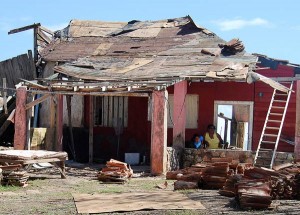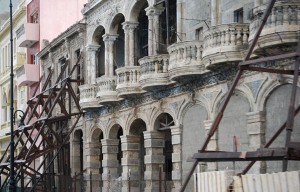Cuba Home Improvement Subsidies Begin

HAVANA TIMES, 18 ene — Low-income Cubans can now receive municipal grants and loans to purchase building materials and pay labor costs associated with the repair or expansion of their houses, thanks to a resolution by the Council of Ministers.
Twenty-four hours after the new program’s start-up, some 4,900 applications for assistance were submitted, of which 1,340 were already approved. According to the press, the high number of denials was due to many applicants “not meeting the eligibility requirements for protection through such subsidies.”
Those who will benefit are households that “lack sufficient funds, live in vulnerable housing conditions, lack housing; or need to build, expand, repair or maintain their property, as long as the work is realized by their own efforts.”
This assistance program, which began operating on January 15, has relatively simple procedures: Interested parties must apply for aid through their municipal housing department, and these agencies are required to give each applicant a response within 45 days.
This new measure complements others that were developed to address the serious housing shortage facing the country. Recently the sale of building materials was authorized, as was the buying and selling of housing on the market (previously homes could only be “swapped”).
“Miraculous stasis”
The government resolution states that “the priorities for the selection will be those needy families affected by disasters and those that are critical social cases.” However it clarifies that this will not be limited only to people who receive social assistance.
About 20 percent of the Cuban population receives support from the Social Security system to prevent them from falling into extreme poverty, but the percentage of people without sufficient resources to resolve their housing problems is much greater.

Cuban officials say that more than 40 percent of homes are in fair or poor condition, while other observers estimate a shortage of half a million housing units to meet people’s immediate needs.
The deterioration is such that the collapse of buildings is a daily occurrence in neighborhoods such as Old Havana and Centro Havana. Architects have coined the term “miraculous stasis” to explain why some buildings have not yet fallen down.
Hurricanes and prohibitions
Among the causes of this housing shortage are frequent hurricanes that tear cross the island destroying hundreds of thousands of homes, especially those in the worse conditions and owned by very low-income people with few resources to rebuild them.
In 2008 alone, three hurricanes swept the island from one end to the other causing material damages amounting to close to $10 billion (USD). Entire neighborhoods disappeared in some communities through which these passed.
Property policy that reigned in Cuba for half a century didn’t help much. Building materials were subsidized, but to buy them government permits were required that were issued in an extremely limited manner.
The main burden of housing construction was in the hands of government building crews that erected apartment buildings throughout the island. However, their work was never sufficient to meet people’s needs in terms of quantity or quality.

Moreover, the buying and selling of real estate was prohibited, which meant many people lived in houses they couldn’t maintain, while others with more resources had to navigate thousands of bureaucratic obstacles to expand theirs.
Redistribution
People can now apply for various subsidies for different types of work. The maximum amount is 80,000 national pesos (about $3,500 USD), which is estimated to be enough to build — with their own effort — a unit with one large room, a kitchen and a bathroom.
Raul Castro’s government proposes to change the subsidy policy by giving priority to assisting the very needy, a mechanism that is being proposed to also extend to food, thereby eventually eliminating the general use of the ration book.
In the case of housing, money for these grants and loans will come from the taxes imposed on the government sales of construction materials at market prices. Consequently, Cubans with greater resources will be funding those with lower incomes.
In general this involves a measure accepted by everyone: Those people in more comfortable financial situations are now allowed to build without fear of being fined, while the poor will have more opportunities to substantially improve their homes.
Private construction activity is now extensive since materials are being sold freely; in all neighborhoods one can see people actively engaged in expanding, repairing and constructing houses. In fact, there’s so much work going on that — despite high prices — there’s always a shortage of materials.





